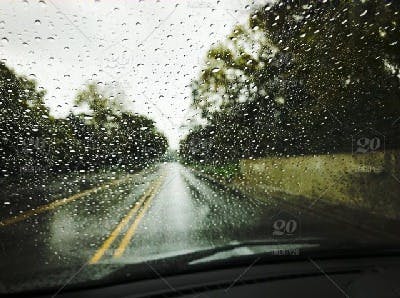
Top Tips for Driving Safely in Heavy Rain
Rainy weather can create challenging driving conditions, especially when the rain is heavy. Reduced visibility, slippery roads, and the increased risk of hydroplaning make driving in heavy rain a potential hazard. However, with the right precautions and driving techniques, you can navigate through wet conditions safely. In this blog post, we’ll share some essential tips to help you stay safe on the road when faced with heavy rain.
- Prepare Your Vehicle: Before hitting the road, ensure your vehicle is in good condition to handle the wet weather. Check your windshield wipers, brakes, and tires regularly. Replace worn-out wiper blades, make sure your brakes are functioning properly, and maintain adequate tire tread depth to optimize grip on wet surfaces.
- Slow Down and Increase Following Distance: Reduced visibility and decreased traction demand that you adjust your driving speed. Slow down and maintain a safe following distance from the vehicle in front of you. This extra space allows for a longer reaction time and provides a buffer to avoid sudden stops or hydroplaning.
- Use Your Headlights and Defoggers: Visibility is crucial when driving in heavy rain. Turn on your headlights, even during the daytime, to make your vehicle more visible to other drivers. Additionally, use your defoggers or air conditioning system to prevent the windows from fogging up, ensuring a clear view of the road.
- Stay Focused and Avoid Distractions: In challenging weather conditions, it’s essential to remain focused on the road. Avoid distractions such as using your mobile phone, adjusting the stereo, or eating while driving. Concentrate on the task at hand, constantly scanning the road for potential hazards and adapt your driving accordingly.
- Be Cautious of Hydroplaning: Hydroplaning occurs when a layer of water builds up between the tires and the road surface, resulting in loss of control. To reduce the risk of hydroplaning, avoid sudden braking or accelerating. Instead, maintain a steady speed and gently apply the brakes when necessary. If you do hydroplane, stay calm, ease off the accelerator, and steer gently in the direction you want to go.
- Avoid Standing Water: Driving through standing water can be dangerous. It’s difficult to gauge its depth, and it may hide hazards or potholes. If possible, try to avoid areas with significant standing water. If you cannot avoid it, reduce your speed and drive through at a steady pace without braking or accelerating abruptly.
- Stay in the Center Lane or Tracks: When driving on a multi-lane road, choose the center lane if it’s clear of other vehicles. Water tends to accumulate on the outer lanes, and driving in the tracks left by other vehicles can provide better traction. However, maintain caution as these tracks can still be filled with water and could cause hydroplaning.
- Watch Out for Aquaplaning: Aquaplaning occurs when your tires lose contact with the road due to a significant amount of water on the surface. If you feel your vehicle losing grip, avoid sudden movements or overcorrecting. Instead, ease off the accelerator, keep a firm grip on the steering wheel, and let the vehicle slow down gradually until the tires regain traction.
Driving in heavy rain requires extra caution and adaptability. By following these top tips, you can enhance your safety and reduce the risk of accidents. Remember to prepare your vehicle, slow down, maintain visibility, and be mindful of hydroplaning and aquaplaning. Always prioritize safety when driving in challenging weather conditions and ensure that you’re well-prepared to face the elements. Stay safe on the roads, even when the rain pours!
Need new tires, brakes, or windshield wipers? Click HERE and Contact Us Today!
Click HERE for Service Specials!
Click HERE for Parts Specials!
